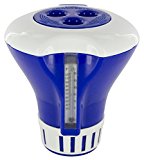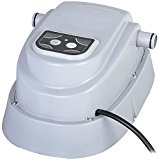Inflatable hot tub purchasing advice: how to choose the right product
- What you need to know
- With an inflatable hot tub it is possible to enjoy the spa experience at home.
- The hot tub can be set up and disassembled very easily.
- Thanks to the wide range of different sizes and price ranges, there is something for every need.
Inflatable hot tub – wellness at home.
Many consider the spa the definition of relaxation. Be it physical or mental stress, it is the ideal place to relieve it. But a visit to the spa costs time, money, and effort. Wellness is most relaxing at home. By purchasing an inflatable hot tub, you can make this dream come true and enjoy the Jacuzzi experience every day in your own four walls—whether after a long day at work or a strenuous workout.
Relaxing in the hot tub should not be considered a luxury. It has been proven that it can benefit both the mind and the body. A hot bath in the pool promotes blood circulation and can even make breathing easier. It also increases the production of the happy hormones serotonin and dopamine. The muscles relax with the help of the warm water, which can speed up the recovery of the body after an intense workout.
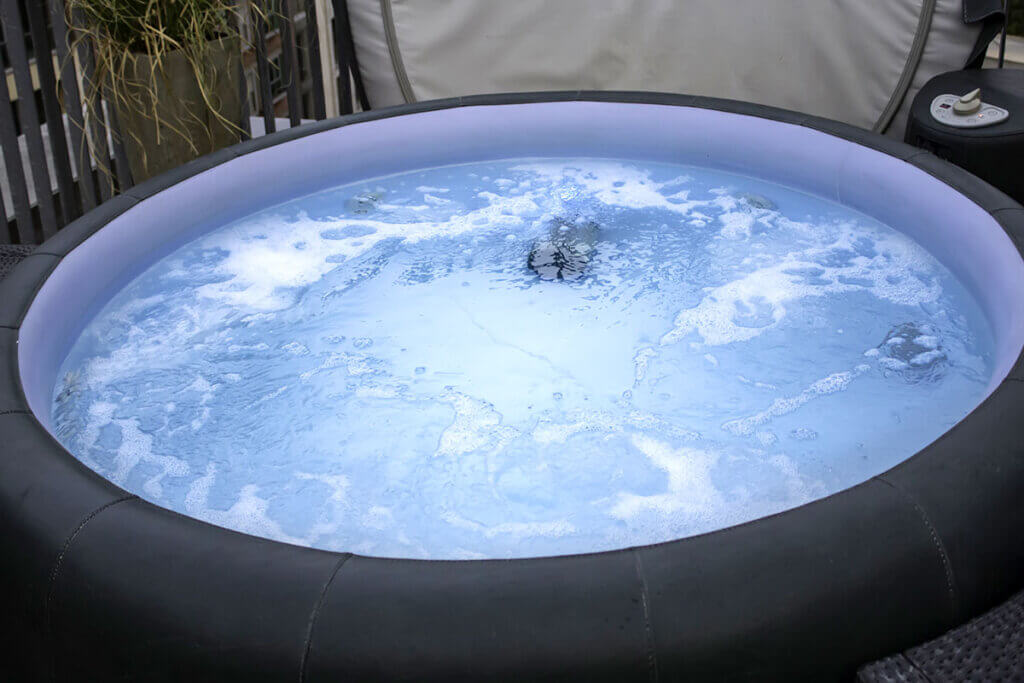
Easy change of location
Saved money and time are not the only advantages of an inflatable pool: the most obvious advantage is that it is not permanently installed. This means it can be moved around as needed, for example if the original installation site proves unsuitable or a change of location is desired. Those who don’t plan to use the inflatable hot tub all year round can easily disassemble it for the winter and store it until it’s used again in the summer. Those who have set it up outside should do so anyway, as freezing temperatures and ice can damage the pool.
More comfortable than a permanently installed version
Although it may seem illogical at first glance, an inflatable hot tub is usually more comfortable than a permanently installed one. This is due to the soft walls and floor that characterize the inflated pool. In contrast, permanently installed tubs are usually made of hard materials that are not particularly comfortable without the purchase of accessories.
Anyone who thinks of a paddling pool when they hear the term ‘inflatable hot tub’ is mistaken. It may look like a paddling pool from the outside, but it is nevertheless an object of much higher quality and complexity. Moreover, unlike a paddling pool, which is mainly intended for children, an inflatable hot tub is primarily suitable for adults, as it is often too deep for children.
Storage in winter
Most manufacturers advise against using the tub at a temperature of less than 41 °F (5 °C), unless the model is equipped with an anti-frost system. The tub can be irreparably damaged by staying in freezing temperatures for a long time. If it were to be used at such a low temperature, the warranty would expire. In addition, the heating power required would be far too great. If you still want to enjoy a hot bath in winter, you can install the pool indoors for the winter period, where the temperature does not reach such depths. This should not be a problem as the assembly and disassembly of an inflatable hot tub is very simple. However, you should make sure in advance that the floor can also bear the heavy load.
How to set up an inflatable hot tub
It is recommended that you read the manual before setting up. However, the steps are quite similar for most models. First of all, it is important to find a suitable location. Once it has been chosen, the assembly can start. A suitable base provides a level foundation and slows down heat loss. As soon as you have plugged the pump into the pool, you can let the air blow in at the push of a button. The same process takes place separately for the bottom of the hot tub. When the tub is standing, the pump and filter must be installed. Finally, the tub is filled with water from a hose.
The temperature can be regulated on the control panel. This can be set to up to 104 °F (40 °C) in most tubs. Heating the water can take some time depending on the size and filling level of the pool. The control panel also allows you to activate the filtration and the jets that create the ‘bubbly’ massage effect.
How to disassemble the hot tub
When disassembling the pool, the first step is to drain the water. Then release the air first from the outer chambers and then from the bottom. Before folding the hot tub, make sure that it is dry and clean so that it retains a good condition during longer storage. It is true that the operation of the various parts can vary between manufacturers. However, the sequence of steps in which the disassembly should take place is the same across the board. It is best to read the manual before dismantling.
Where is the best place to put the tub?
What makes inflatable hot tubs so attractive is their flexibility, as they can be set up almost anywhere. However, the area where the pool is placed must meet a few criteria: for example, there must be a power connection nearby. The surface must also be level so that the water is evenly distributed in the tub. There must be no sharp objects such as pebbles under the pool. In addition, the weight of an inflatable pool should not be underestimated when full. After all, inflatable hot tubs can hold more than 800 liters (200 gallons). A filled pool can weigh several tonnes. For consumers, this means that they must make sure that the floor can support such a weight. For this reason, it is not advisable to set up the pool on a balcony. Even some apartment floors could be overwhelmed by carrying such a load. The safest option is to install the tub as an outdoor pool.
The placement of the hot tub also affects its durability and the water quality. Therefore, it should not be placed in direct sunlight in midsummer. UV radiation can damage the material of the inflatable hot tub. Although this doesn’t happen overnight, the hot tub could be irreparably damaged after long and continuous exposure to UV radiation. In addition, sunlight facilitates the growth of bacteria in the water. Both problems can be solved with the help of a cover. The latter should even be included in the scope of delivery, as the products are also intended for outdoor use.
Purchase criteria
A large part of the purchase criteria is subjective. For example, the desired size or shape of the hot tub depends on personal requirements. Everyone sets their own priorities, but it is important to pay attention to the general quality of workmanship. Both the workmanship of the pool body and the technology should therefore be of high quality, even in the lower price ranges.
Size
One of the most important decisions when purchasing an inflatable hot tub is its size. There are a number of things to consider here: for example, consumers should be clear about where they want to set up the pool before buying. After all, the pool must fit in its intended place. The number of people by whom the tub will be used is also an important factor. The maximum number of people specified by the manufacturer should not be exceeded, otherwise too much pressure will be exerted on the outer wall. It is therefore not advisable to buy a tub model for two people and use it for three just to save money. After all, comfort is an important factor, especially with hot tubs. If three people squeeze into an inflatable tub for two, it is anything but comfortable and relaxing. Thus, it is advisable to invest a little more money and buy a four-person pool. That way an additional guest can also get in.
Inflatable hot tubs from different manufacturers have very similar dimensions: the height is usually 23 to 31 inches (60 to 80 cm). This means that the water reaches up to the shoulders of an average adult when seated. The length or width depends not only on the number of people, but also on the shape of the hot tub. In the case of a round or square pool—the most popular shapes—the values are of course identical. The length is usually 67 to 83 inches (170 to 210 cm). However, this doesn’t mean that there is enough space in the tub to stretch out your legs. To calculate the length of the interior, twice the thickness of the wall must be subtracted from the total length.
Shape
Inflatable hot tubs come in very different shapes: round, square, oval, hexagonal and octagonal. Round and square pools are the bestsellers because they are easy to set up and save space. They are also usually smaller than oval or polygonal pools.
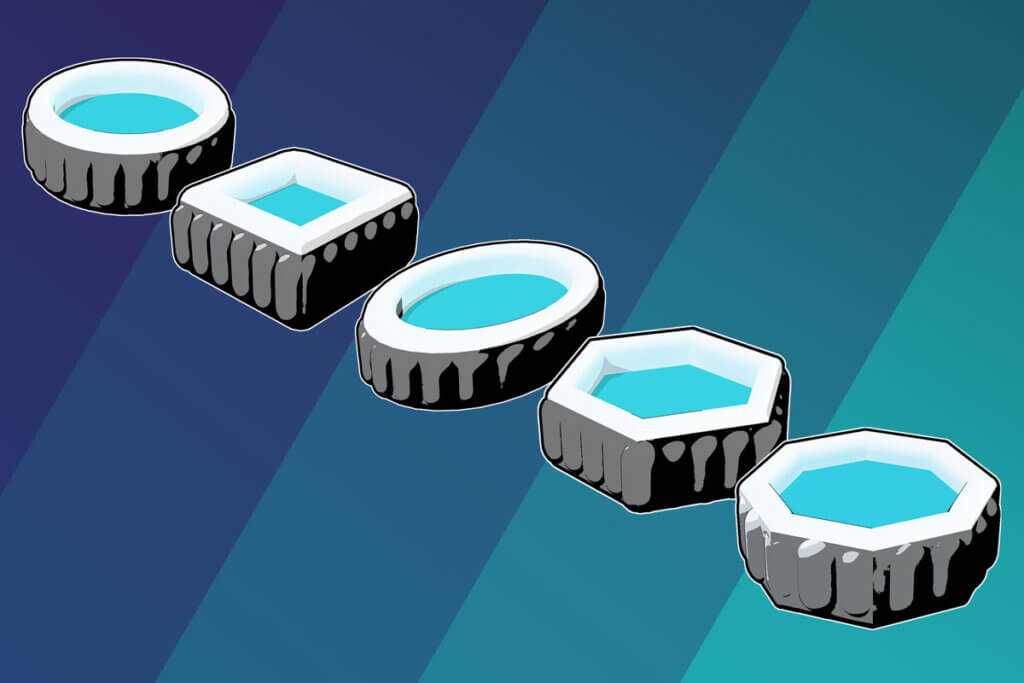
Weight
The hot tub itself weighs relatively little. Depending on the size, the weight is 44 to 88 pounds (20 to 40 kg). However, full hot tubs are considerably heavier. A small pool for two people weighs about 44 pounds. When it is full, about 1,100 lb is added, plus the weight of the people in the tub. Large pools for up to six people weigh almost 88 lb. These can be filled with up to 400 gallons of water, plus the weight of the people in the pool. The weight of a hot tub can therefore vary from about 1,400 to more than 4,400 lb. It is therefore very important to make sure that the location can safely bear the load.
Materials
Inflatable hot tubs are made of plastic. PVC and polyester foils as well as artificial leather are often used. A product that is supposed to last a long time should consist of several layers. Established manufacturers such as Intex, Bestway, and Miweba market pools with three to six layers. Miweba, for example, uses a six-layer reinforced PVC for its MSpa DELIGHT series. Therefore, consumers often go for products from Intex or Miweba’s MSpa range. The general rule of thumb is that the more layers there are, the more resistant the pool is to high or low temperatures, extreme weather conditions, shocks, and harmful chemicals. Some manufacturers even use luxury material such as memory foam, so that the seating surface adapts to the individual person.
Heating
Inflatable hot tubs are equipped with a heater that heats the water and thus provides the pleasant spa feeling that most users want. The warm water relaxes the body and promotes blood circulation. Only with warm water can the jets fully unfold their muscle-relaxing effect.
The control panel allows users to control the heating. The maximum water temperature is about 104 °F (40 °C), sometimes even 107,6 °F (42 °C). The minimum temperature depends on the heating capability of the hot tub. Furthermore, the pool heater warms the pool only by about 1.5 to 2.0 °C per hour. This means that, depending on the water volume, quite a bit of time must be planned until you can sit in your hot tub. It might take as long as half a day to a whole day.
As heating not only requires time but also electricity, users are advised to insulate the pool as much as possible instead of leaving the heating on permanently. Of course, cooling down cannot be prevented completely. Sooner or later the pool will have to be reheated. In order to achieve the slowest possible cooling of the water, two accessories are necessary that are included in most pools: a cover and a floor mat. The former ensures that the water gives off less heat to the air. In addition, a cover helps to keep the water clean by preventing foreign bodies from getting into the water. The floor mat is placed under the pool and prevents too much heat from being lost through the floor.
Capacity
Anyone who wants a pool oasis in total silence will probably be disappointed by the inflatable hot tub. The massage jets create whirling, and where there is whirling, a certain noise level is to be expected. It is best to ask the manufacturer or retailer how loud the product is before purchasing. After all, the main purpose of a hot tub is to relax, which is impossible if it’s too loud.
Once again, this also depends on the location of the tub: if it is in a small bare room where it reverberates, the noise will be all the louder. The garden or terrace are more suitable. The pool should not be so loud that it disturbs the neighbors. It is also helpful to choose high-quality products. These are usually quieter. Manufacturers such as Miweba even advertise that their products are particularly quiet.
Both the filtration system and the massage jets work with motor-driven pumps. Thus, they are the parts of the pool that produce noise. The massage jets are the noisiest. Not only does the motor generate noise, but the whirls and bubbles caused by the jets drive the noise level up. Anyone who wants to enjoy a whirlpool massage must therefore reckon with a noise level of around 72 dB, which is about as loud as a vacuum cleaner. Other pool parts generate a noise level of around 60 dB and sometimes only 50 dB with high-quality products.
Jets
The jets of the inflatable hot tub compensate for the disadvantage of the noise level with their effect. They are responsible for both the bubbles and the massage, one of the most important functions of an inflatable hot tub. Tubs usually have 80 to 150 jets. These are divided into air jets and water jets. Pools with air jets, are very popular because they produce the desired effect and are also cheaper. Air jets pump the air from outside into the pool. Water jets are more expensive because they have additional functions, such as controlling the direction of the jet. Water jets work with the help of a water pump. The most effective hot tubs are those that combine air and water jets. However, such models are considerably more expensive.
Why can’t the pools be filled with salt water?
Salt is a natural agent that can ensure clean water. Through salt water electrolysis, chlorine is created. As a result, no additional chlorine or other disinfectant is required. However, salt must not be used in most inflatable hot tubs. PVC, the plastic from which most pools are made, is sensitive to salt water. The salt water could therefore attack the inner wall of the pool. The pump and filter could also be damaged. Exceptions are pools with a salt water system. These allow the use of salt and should be explicitly labelled as such. Theoretically, it is also possible to retrofit a salt water electrolysis device. However, an expert should be consulted in advance. After all, most hot tubs are made of PVC or a similar plastic, which means that operation with salt water is out of the question.
Filter systems
To keep the inflatable hot tub clean, filters are used in addition to chemicals such as chlorine. They filter out impurities and coarse particles such as hair. They also prevent germs from developing in the water. The most common types of filters are cartridge filters and sand filters. Although there are also sponge and foam filters, these are used rather rarely.
Filter cartridges trap waste using paper cartridges. Although they are cheap to buy, they have to be changed regularly. They are therefore not particularly environmentally friendly and cause running costs. They are most often used in small pools. Cartridge filters are best suited for users who do not use the pool too often, as the costs otherwise add up quickly.
Sand filters filter the water with the help of quartz sand grains. They need to be cleaned less often than cartridge filters and therefore require less maintenance. On the other hand, they are significantly more expensive than cartridge filters. They are most often used in large pools. If you use your pool a lot and all year round, you are better off with sand filters, as they are cheaper in the long run.
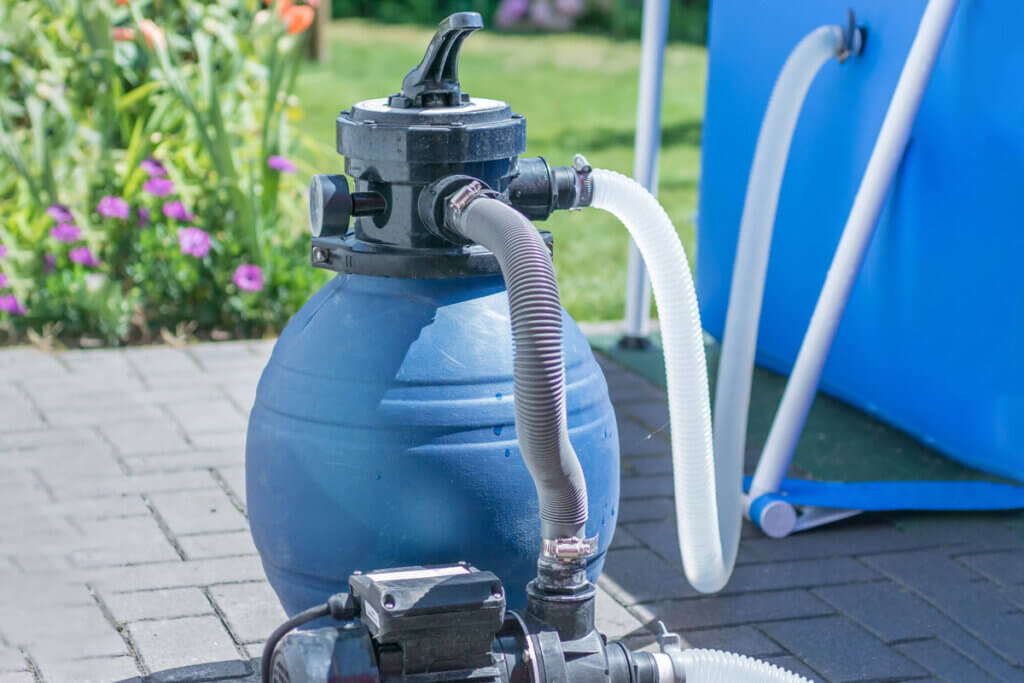
Necessary accessories
A number of accessories are usually included with inflatable hot tubs. These include indispensable components without which the pool cannot fulfil its functions: the heater, the pump, and the filter. In addition, there are accessories that are practical and enrich the hot tub experience, for example a repair kit or a carrying bag. Customers can also expect a floor mat and a cover.
Optional accessories
Some accessories are mainly used to make the inflatable hot tub more cosy, beautiful, and comfortable. LED lights are one example. Anyone who has ever seen a pool illuminated under water at night knows that LEDs can greatly enhance the aesthetics. Of course, they are not necessary for the use of a hot tub.
Pillows for sitting or for the neck increase comfort. Those made of memory foam are particularly comfortable. A drinks holder can also make for a more relaxing experience, as it allows you to enjoy a refreshing drink while bathing.
If you want to upgrade technologically, you can get a timer for the heater and even for the LEDs. A filter change alarm helps you not to forget the regular maintenance of the filter.
Last but not least, it is possible to make the pool more barrier-free for children and senior citizens by purchasing an entry aid. After all, a hot tub is 24 to 31 inch (60 to 80 cm) high. If you want additional protection from the sun or rain, you can erect a gazebo.
The above-mentioned items are not necessary, but can improve the experience considerably. Some manufacturers also offer them as part of the delivery. For example, there are hot tubs where cushions are included in the purchase price.
Price
The price of an inflatable hot tub can vary greatly. For example, a pool for six people is usually more expensive than one for two people. The quality of the product is another factor. The number of plastic layers and the general quality of workmanship are decisive here. Last but not least, the equipment is important. The price of a hot tub can range from $300 to $1,500.
Costs for power consumption
In addition to the purchase costs, an inflatable hot tubs also incurs costs for its use and maintenance. The largest running cost factor is the electricity. The hot tubs’s power consumption is mainly determined by its size. A pool with a capacity of 264 gallons requires more electricity for heating than a 132-gallon pool. The same principle applies to the pump: the larger the pool, the higher the electricity consumption. Heaters have an output of 1,500 to 2,200 watts, pumps about 2,000 watts.
Depending on the outside temperature and the size of the hot tub, heating can take half a day to a whole day. This is how much it would cost to heat up the pool once:
| Power | Per hour | Per half day | Per day |
|---|---|---|---|
| 1,500 watts | $0,47 | $5.64 | $11.28 |
| 2,000 watts | $0,61 | $7.32 | $14.64 |
| 2,200 watts | $0,68 | $8.16 | $16.32 |
Costs for the water
An additional cost factor is the water, which is a prerequisite for using the hot tub. Here, too, the size is decisive: some pools require 132 to 396 gallons of water to be filled. Also bear in mind that you will have to change the water every now and then, depending on how often you use the pool. If you use the pool all year round, you will have to change the water about three times a year.
Maintenance costs
Further costs arise from the maintenance requirements of an inflatable hot tub. Chlorine or other substances such as vitamin C or active oxygen are required for cleaning. Although this should not be too expensive, the cleaning agents and disinfectants are still not free. Chlorine tablets cost between $60 and $70 for a 25-pound bag. In addition, the filters have to be changed regularly. Compared to the cost of electricity, however, the cost of filters and chlorine is not very high.
Maintenance tips
When maintaining and cleaning the pool, attention must be paid to the purity of the water and the cleanliness of the pool. To keep the water clean, chemicals are used in pools, usually chlorine. However, vitamin C or active oxygen can also be used. The amount of chlorine needed depends on how dirty the water is. It is best to consult the manufacturer’s manual for advice. The filters also need to be changed or cleaned regularly.
How often the water needs to be changed depends on how intensively you use the hot tub. The water in a pool that is used all year round should be changed at least three times a year. You can use the opportunity of the empty pool directly for its cleaning. After you have let out the water and air, scrub the inside wall with a sponge and some washing-up liquid. Then rinse it with water and let it dry before either storing it or filling it again.
Where can I buy a hot tub?
If you want to buy an inflatable hot tub, you can first try a DIY store. Customers can often see the products there and get a better feel for the size and equipment. However, the range is much larger online. In addition, the best prices are usually found on the internet. Before buying, however, it is essential to pay attention to the shipping costs. These can increase the price of the pool depending on the size and considerably.
Image 1: © celiafoto / stock.adobe.com | Image 2: © FinalCheck | Image 3: © Ralf Geithe / stock.adobe.com

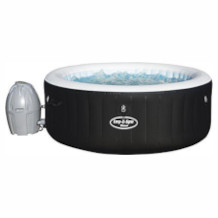
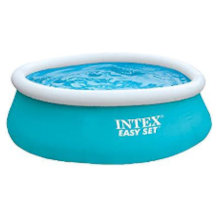
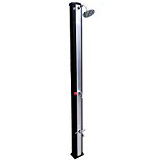
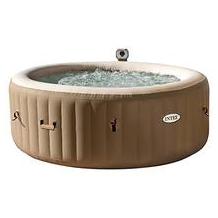
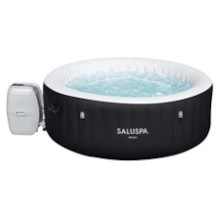
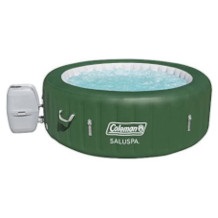
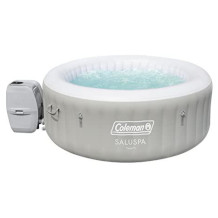
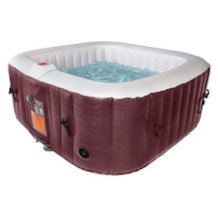
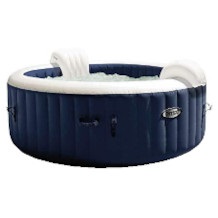
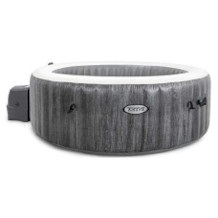

 1,118 reviews
1,118 reviews


